More damming to the reputation is that it causes hay fever, but few know that Goldenrod is nothing to sneeze at and does not cause seasonal allergies. You cannot be allergic to Goldenrod pollen. Why? … because in observation it has little and it is pollinated by insects. Basically, it is a nectar producer with minor pollen to entice the pollinator, which is about every insect alive. Generally speaking, it is the wind-pollinated plants such as Ragweed that cause most allergic reactions. Sadly, as these two plants bloom at the same time, the showy Goldenrod takes the blame.
Less well known is that (like Fireweed) many parts of the Goldenrod are edible. Flowers and leaves are used to make tea and the young leaves can be cooked or added to soup.
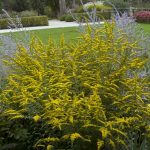 |
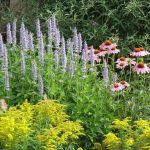 |
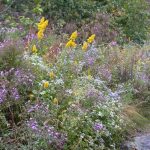 |
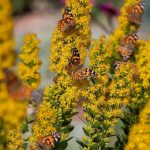 |
Landscape wise it is always a winner when used with Agapanthus or other blues such as Perovskia or Caryopteris. Some advantages it has is that when established most species and cultivars can survive droughts and like Zaushneria it provides a diverse pollinator friendly backbone to your garden scheme. Re-wilding your garden and getting rid of costly lawns provides a much healthier habitat for wildlife and invites visitation of insects such as the Monarch butterfly. Once established in dense groupings you will also find that they will compete nicely with weeds, something more finicky plants fail to do, the major reason some landscape upgrades to your garden struggle. Density and sticking to the idea of keeping it simple works. Pick out three to five plants and keep it to that. Competition can be friendly if they share the same plant needs.
For good reasons goldenrod’s should be a tried-and-true favorite. Most goldenrod species are native to North America and can be planted in the fall or spring, either from potted nursery starts or seeds. Some cultivars grow rapidly and can spread aggressively. Goldenrod’s planted out in Fall will reach full size by the next year.
Goldenrod wins the pollinator award for “Most Diverse Cast.”
| These can range from the species such as Solidago elongata – Cascade Canada goldenrod, West Coast goldenrod. Found in sandy or gravelly open areas. In Western Clallam County it blooms July-Sept. | 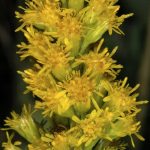 |
| Solidago multiradiata Northern goldenrod Found in Mountain meadows and higher elevations, more orange in color. June -Sept. | 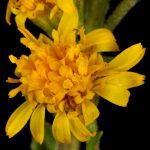 |
| Solidago simplex Found in open, slightly moist alpine meadows. Probably in the Park system. June to Sept., and is much less common. I continue to look for his plant and will happily trade. | 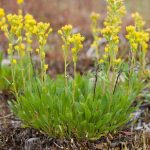 |
Cultivars however rule the roost when it comes to length or production of bloom. At the moment I am growing the following: Always on the lookout for more, and have some seed to share!
| Solidago ‘Little Lemon’ is a very early and chirpy hybrid that blooms in mid-summer to fall with full, bright lemon-yellow flower spikes held over small compact plants. Only S. cutleri is more dwarf. These two swarf varieties are great for smaller gardens where other goldenrods would be too large Both can be well used as edging plants around their larger cousins. Most goldenrods tolerate a variety of soils and can even grow in part shade. Good companions include Agastache cana or fall blooming asters | 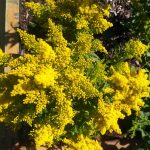 |
.

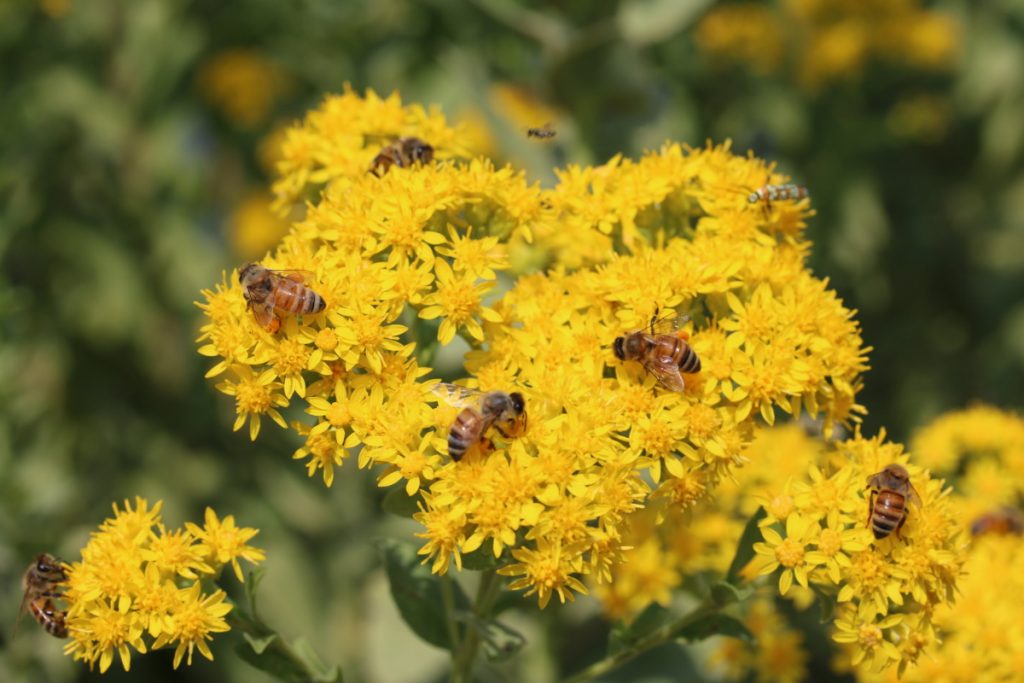
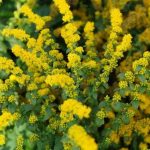
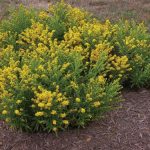
Nice article
Thank you Joyce!
A valuable gold, to be sure!
Thank you Lori,
Ah yes, and I have a lot of good seed to trade or give away.